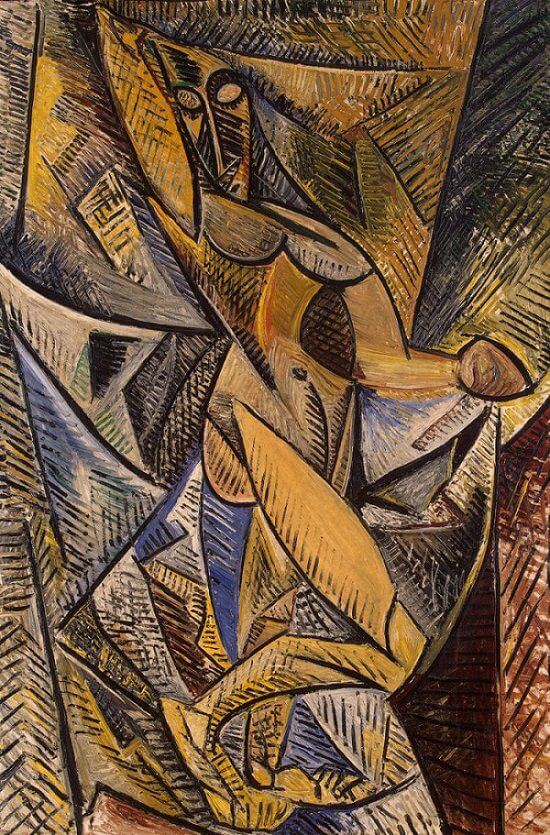Dance with Veils, 1907 by Pablo Picasso

Picasso's experiments in formulating new ways of representing the human body were enhanced in 1907 by the introduction of a new technique into his paintings - the use of hatch marks. These are most evident in his Dance with Veils, where close parallel lines are deployed to suggest volume and shading. These lines, often referred to as striations, appear throughout the work, to model both the female body and the space it inhabits.
The deliberately inconsistent use of such shading, however, serves to undermine our sense of a real, three-dimensional body in real space. Instead, the form seems to be constructed from a series of intersecting geometrical planes, which in turn echo the similar geometrical planes that make up the surrounding space, making the contours of the female nude difficult to discern. This hatching technique is most commonly deployed in drawing and printmaking, where linear execution and the absence of color make it a useful means to imply depth. Here, however, Picasso employs it in an oil painting as a means to investigate different possibilities for the representation of the body in space.
















